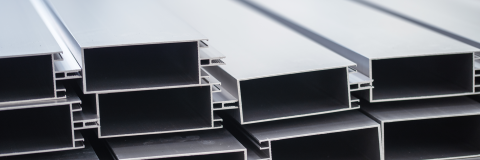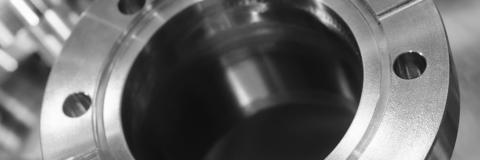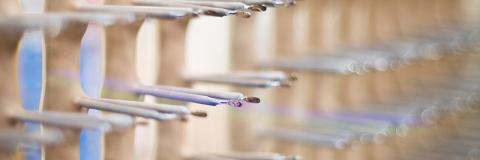Q. We plate our parts in a mixed acid-zinc rack solution containing both ammonium and potassium chloride.
How do we improve the clarity, brightness, and thickness of our zinc deposit, especially in the low current density (LCD) areas of our parts, without sacrificing throwing power and extending plating time?
A. To ensure that your high current density (HCD) areas are not receiving too much metal and that the LCD areas are receiving enough, it is often helpful to lower the zinc metal concentration of the solution from around 4.5-5.0 ounces per gallon (opg) to around 3.5 opg or lower. Lower zinc metal concentrations ranging between 3.2 to 3.8 opg have been shown to improve both throwing and covering power with certain chemistries.
Within the industry, “throwing” and “coverage” are used interchangeably, so let’s begin by defining these terms. Covering power is a solution’s ability to initiate plating in the recesses of a part, like the inner dimension (ID) of tubular components. Throwing power deals with deposit uniformity along the current density spectrum, from high to low. When the HCD area thickness is close to the LCD area thickness, the solution is displaying good throwing. Alkaline-non-cyanide-zinc (ANCZ) solutions have exceptional throwing power, whereas acid zinc solutions generally do not; however, acid zinc can achieve exceptional covering power, often exceeding that of their ANCZ counterparts.
Zinc Metal Concentration
Keeping the zinc metal concentration on the higher end of the opg range will alleviate HCD burning, which is defined as the formation of zinc-hydroxide nodulation that mimics the appearance of metal in contact with a burning blowtorch. Ammonium chloride is often incorporated as an outstanding pH buffer, with the ability to lessen the intensity of any burn that may manifest. A good Carrier (proprietary additive) will also help spread the current across the current-density spectrum, tempering any inclination toward burning.
Chloride to Zinc Metal Ratio
Historically, the standard recommended ratio of total chloride to zinc metal has been around 4.5: 1. Recently, it was discovered that a zinc metal figure of 3.5 opg, and a total chloride figure at around 21 opg (closer to a 6 to 1 ratio), was more advantageous. This preferred ratio was made possible through the use of ammonium chloride and a Carrier. The concentration range for ammonium chloride is also important to review. An average mixed solution tends to run the ammonium chloride concentration at 3 to 6 opg. It has been found that increasing the concentration to the 6 to 9 opg range helps with buffering the pH, clarifying the deposit, and supporting the throwing and covering power.
Anode Current Densities
To avoid large upswings in zinc metal concentration, it is important to avoid high anode current densities (ACD) and low pHs, as these process parameters may cause an excessive degree of anode dissolution. Anything beyond 25 amps per square foot is not recommended. High ACDs will also increase the brightener consumption, which may decrease LCD brightness. High ACD may also decrease uniformity in both thickness and clarity or specular reflectivity. Occasional weekly dilutions of the zinc solution or running at a higher-than-normal pH may be necessary to maintain a proper metal concentration.
To enhance LCD deposition, chloride ion is typically selected for its ability to assist with ionic movement. Yet too much chloride can lower a solution’s cloud point, risking LCD dullness and HCD burning, so care must be taken when making salt additions. Cloud point is the temperature at which a solution’s most insoluble ingredients precipitate out of the solution.
Brightener concentration
Proper brightener concentration is fundamental to ensuring LCD area brightness and coverage.
But over the lifetime of a bath, brighteners can degrade. These organic byproducts can affect LCD areas in the form of dullness, so proper filtration via cellulose powder and activated carbon is paramount. Overdoses of brightener can produce reduced thickness or even skip plating (missing a plated area), as can high iron (>75 ppm) and low current densities. To ensure that the brightener is solubilized and stabilized, a correct amount of Carrier is needed. Keeping pH in the 5.0 to 5.4 range can improve LCD brightness, but if the pH is too low, it increases the potential for additives to oil out of the solution. Low pH will also increase the dissolution of anodes and cause metal growth. To minimize brightener degradation, the solution should be kept in the proper range. It is important to note that some heat (80 to 90°F) will help improve deposit distribution (throw) as will good agitation, improving LCD coverage and clarity.
An array of options are available to improve LCD coverage, brightness, and throw. Yet, two indicators are paramount to ensuring the success of your mixed acid-zinc rack solution. Proper concentrations of zinc metal and total chloride, as well as maintaining their proper ratio, will help ensure reliable and uniform zinc deposits.
Check out the full article, available now on finishingandcoating.com.











